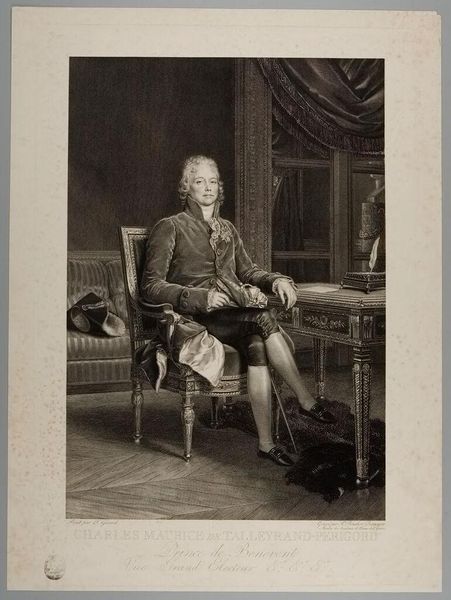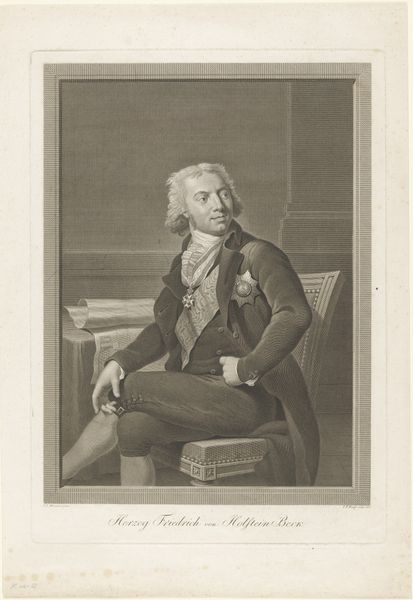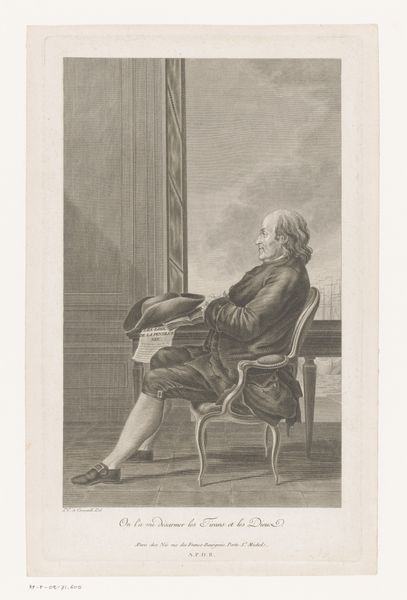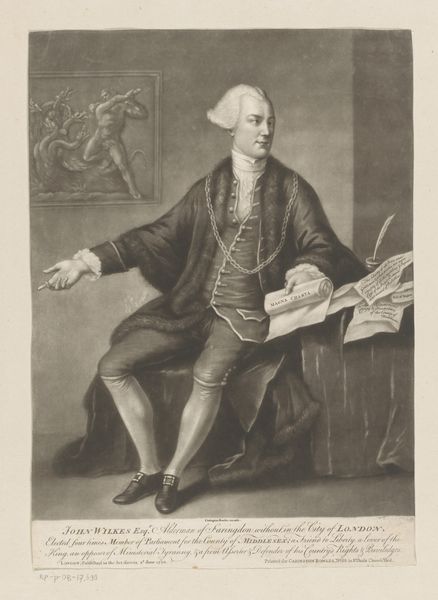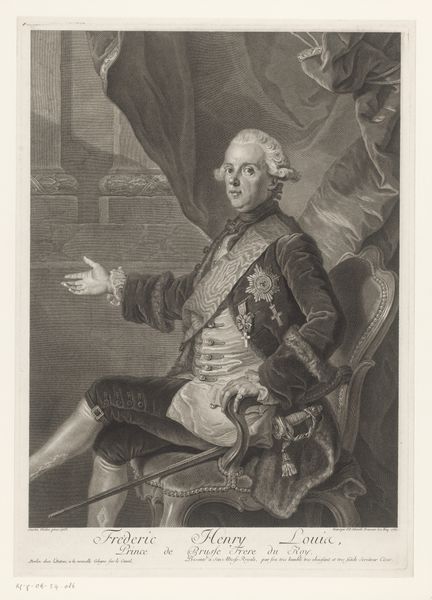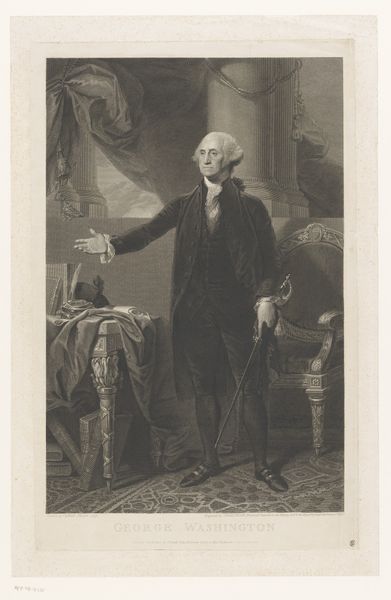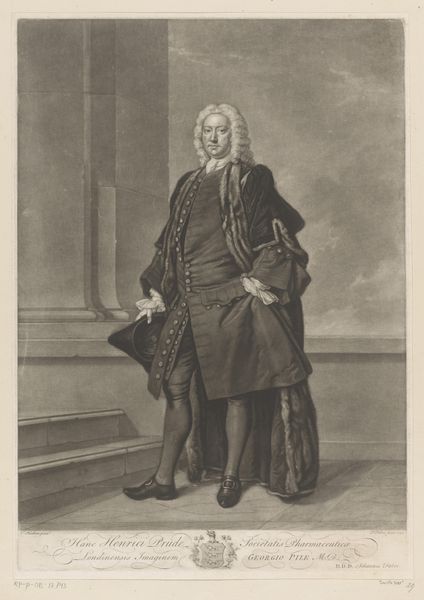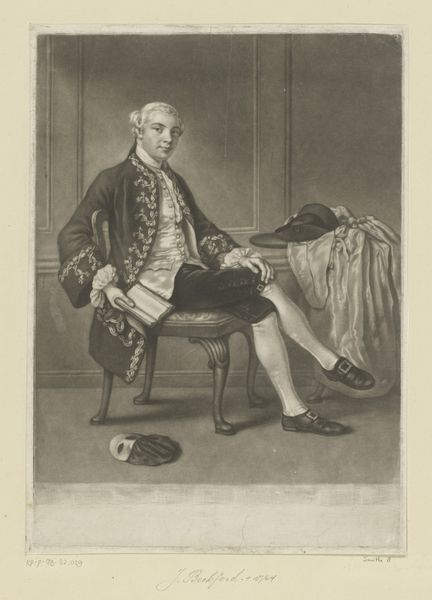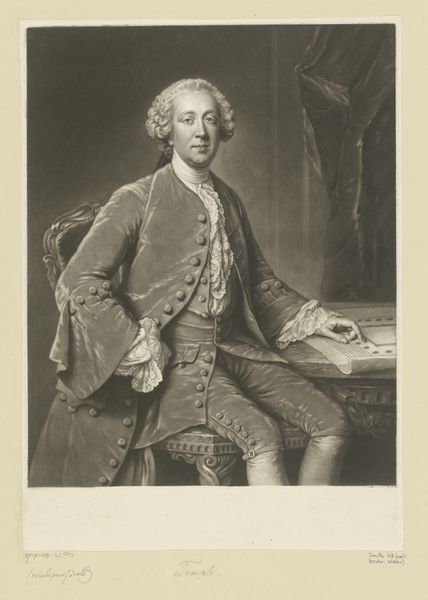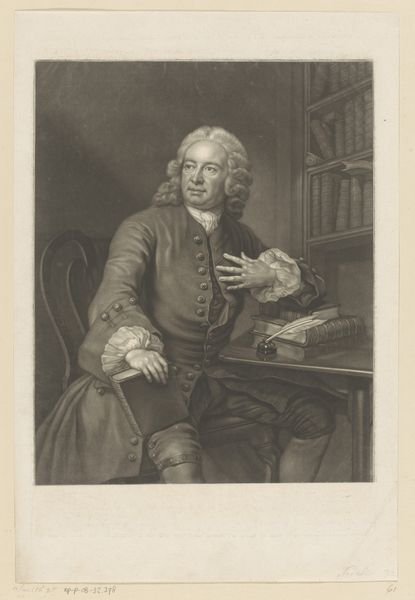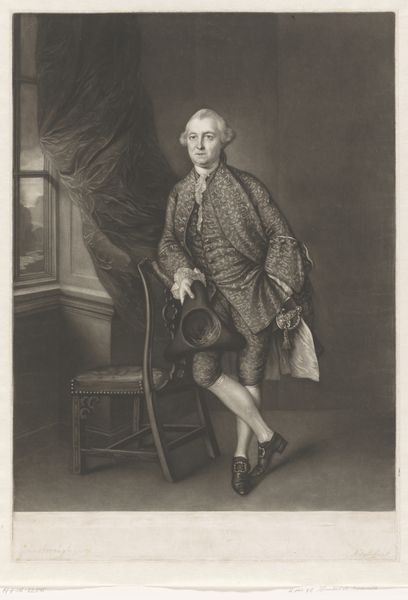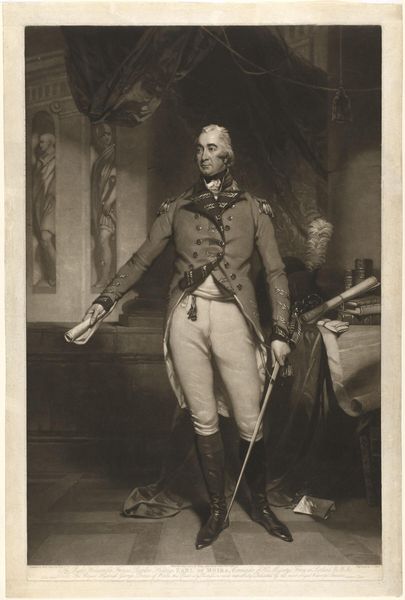
Portrait of Charles Maurice de Talleyrand-Périgord 1808 - 1812
0:00
0:00
drawing, print, etching, engraving
#
portrait
#
drawing
#
neoclacissism
# print
#
etching
#
history-painting
#
engraving
Dimensions: image: 19 3/4 x 13 9/16 in. (50.1 x 34.5 cm) plate: 23 3/4 x 16 1/8 in. (60.3 x 41 cm) sheet: 27 3/8 x 19 15/16 in. (69.5 x 50.6 cm)
Copyright: Public Domain
Curator: Before us we have a striking print from the Neoclassical era, sometime between 1808 and 1812. The piece is entitled "Portrait of Charles Maurice de Talleyrand-Périgord" made through engraving and etching by Auguste Gaspard Louis Boucher Desnoyers. Editor: The immediate impact is…dignified, perhaps a touch aloof. The composition is incredibly balanced, the figure poised with that cool gaze. There is an implicit statement about the ruling classes, who commissioned it. I want to dive into that relationship. Curator: A print like this one demanded meticulous labor, multiple stages involving the engraver, the etcher, and potentially other workshops involved in printing and distribution. Prints made art accessible on a scale previously unseen, influencing aesthetics far beyond court circles. The social impact is just as important to me as the figure being portrayed here. Editor: Absolutely, let's situate Talleyrand within his historical moment. A complex figure to be sure— a Bishop who served through revolution, empire, and restoration, navigating incredibly volatile political landscapes. To engage with this image we need to also understand how portraits can become tools for legitimizing power. Curator: Looking closer, consider the paper itself—its texture, its source, the way the ink adheres. Even the distribution networks were important material systems that gave life to the art. Where was this likely printed, and who had access? This informs our understanding of both the portrayed sitter and the maker of this piece, and reveals class dynamics through access and viewership. Editor: The gaze that the sitter is throwing at the viewer, can tell so many different and often contradictory things. Is that wisdom, or perhaps cynicism reflecting decades spent in high political office? This image certainly begs more questions than it offers simple answers. Curator: Indeed. Studying pieces like this one pushes us to understand the production as social process, as a workstream intersecting technology, skill, commerce and political strategy, but more important even consumption— revealing networks far outside the artists and sitter’s intent. Editor: For me it comes down to examining history, engaging in dialogue, so we are aware of social relations and historical context reflected in the image to better confront narratives. Curator: It’s important that we see production and making as an informative art to explore class and access during its creation. Editor: Well, on that thought, I suppose it is time to find our next source of shared wisdom!
Comments
No comments
Be the first to comment and join the conversation on the ultimate creative platform.
